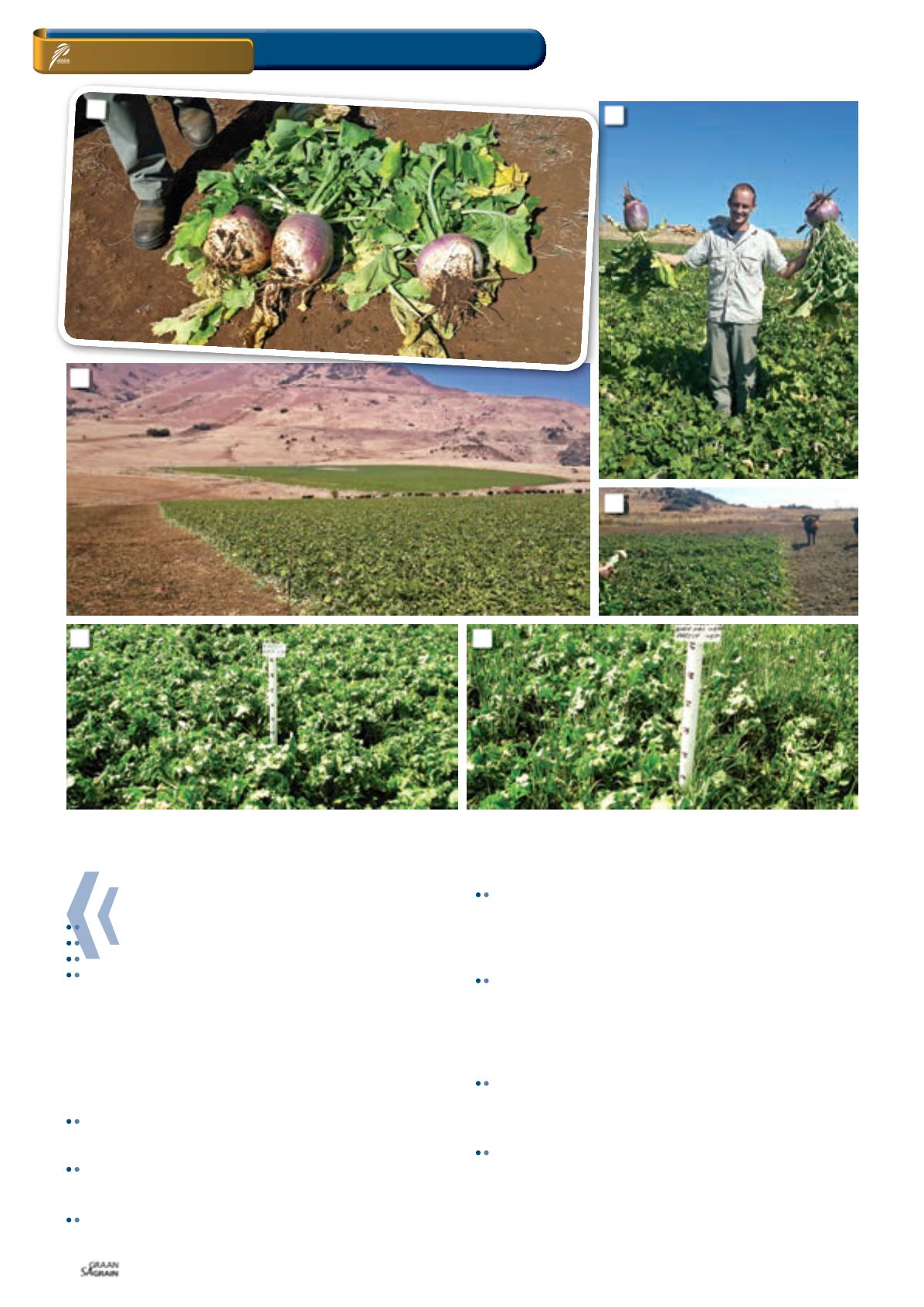

Soil conservation and health benefits
It is known that when forage radish is grown as a cover crop, it can
contribute significantly to:
Quantities of nutrients and organic matter.
Improved soil nutrient availability.
Suppress weeds.
The alleviation of compaction layers.
In a few research trials it was found that forage radish plots had
fewer weeds and almost no remaining cover crop residue, which re-
sulted in warmer, drier soils.
According to
Gruver
et al.
(
2014
) this crop has been researched ex-
tensively to highlight the benefits of radish cover crops on:
Soil structure
Once radishes eventually die, their large roots desiccate and
the channels created by the roots remain open which improves
water infiltration and surface drainage.
Research has also shown that this species’ root penetrates com-
pacted soils extremely well.
Weeds
High population of radishes can suppress weed growth by
overshadowing them.
Nitrate leaching
Because of their deep root system, rapid root extension and
heavy nitrogen (N) requirement, radishes are excellent users
of residual N following summer crops, especially if they have
been irrigated.
Early spring nitrogen
Unlike some of the rye crops whose residues decompose slowly
and continue to immobilise N for an extended period, radish
residues decompose and release N rapidly. If the follow-up crop
establishment is planned well, the radish growth can be boosted
as if it was planted after a legume crop or initial N fertilisation.
Soil phosphorus and potassium
Radishes are excellent accumulators of P and K (root dry matter
commonly contains more than 0,5% P and 4% K), and research
has shown that soil P levels have been higher after a radish crop.
Soil erosion and runoff
This canopy intercepts rain drops, minimising surface impact
and the detachment of soil particles. Even when radishes are
killed by a severe frost, a layer of decomposing residue remains
on the soil surface up until early spring providing erosion con-
trol. In addition, runoff and sediment transport are reduced be-
cause of the rapid infiltration facilitated by open root holes.
ON FARM LEVEL
Conservation agriculture
Junie 2015
56
CONSERVATION AGRICULTURE
3
5
6
2
4
1

















